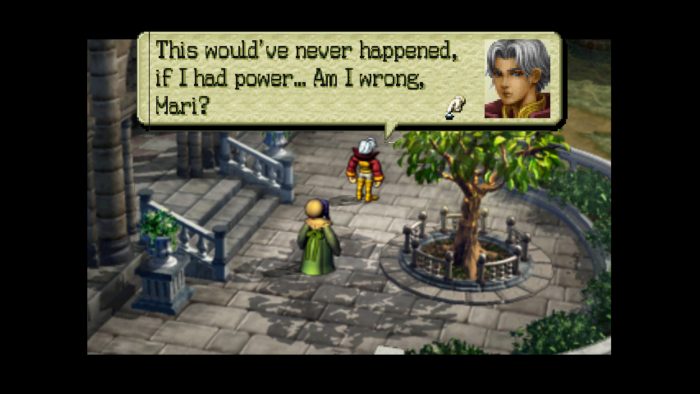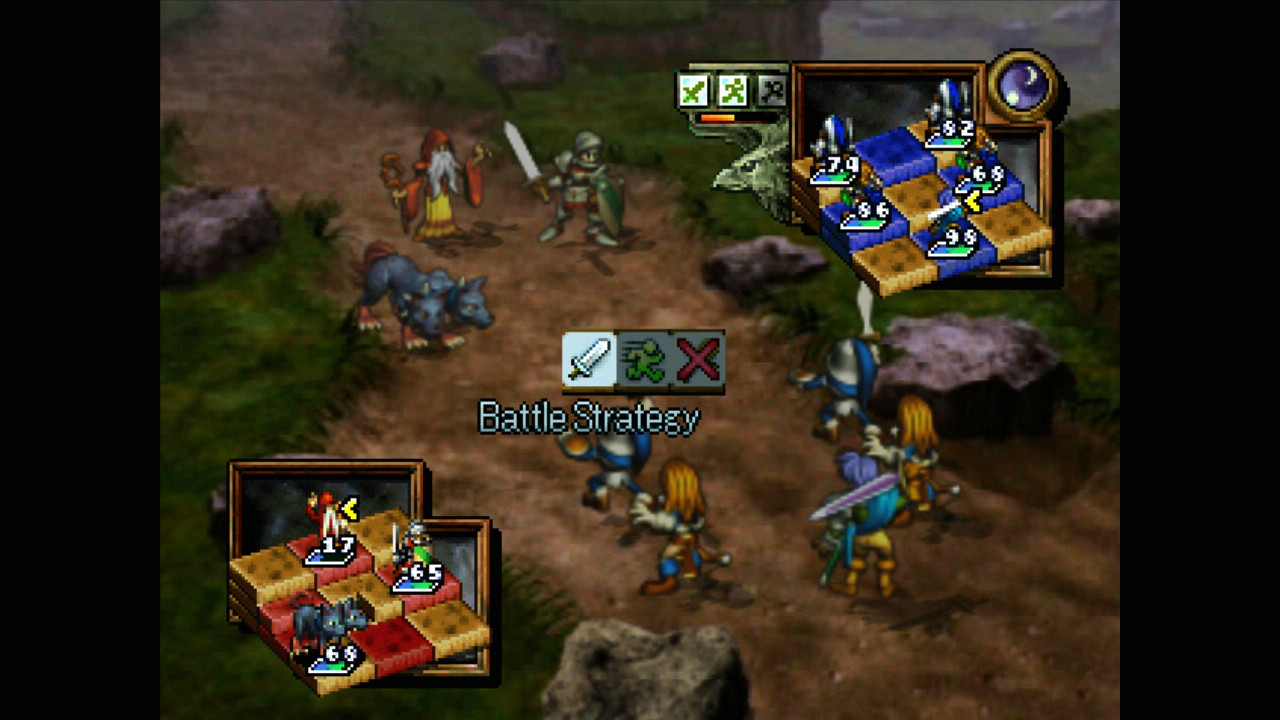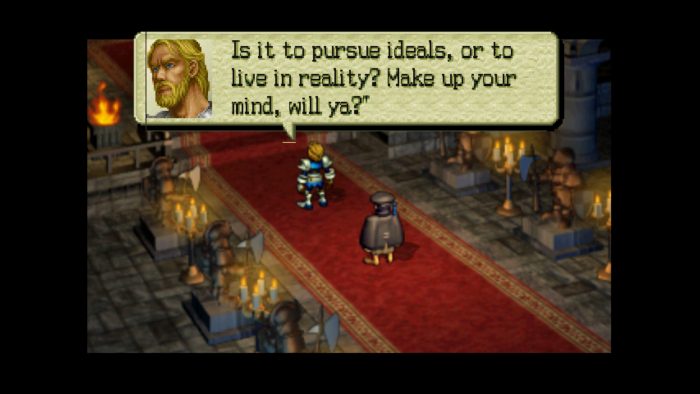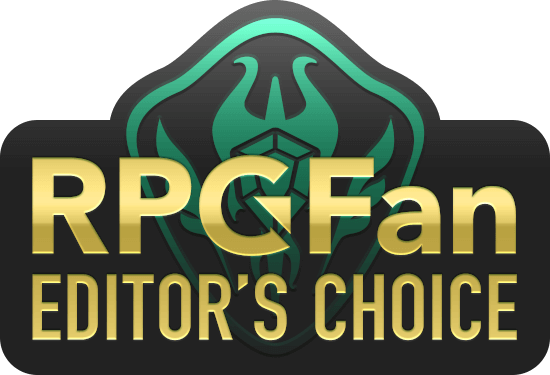On the Nintendo 64, a mighty system nonetheless nearly bereft of RPGs, there stands one that strives to be as sweeping, sprawling, and important as any of its greatest peers on PlayStation and Saturn. Without the seemingly unlimited capacity offered by the CD-ROM format, how could a game fulfill ambitions such as these? Without voice acting, Red Book audio, or opulent CGI cutscenes, how could a game on a cartridge properly convey similar grandeur? Ogre Battle 64: Person of Lordly Caliber seemingly has everything stacked against it in these regards and more. Aside from having to fit on a measly 320 megabit Nintendo 64 cartridge, it is the sequel to renowned SNES real-time tactical RPG Ogre Battle: March of the Black Queen, directed and designed by none other than the luminary Yasumi Matsuno, who did not return to direct Person of Lordly Caliber. Thus disadvantaged, how could Person of Lordly Caliber live up to its predecessor, let alone the compact disc-fueled contemporary appetite for production value in role-playing games?
Apparently, these disadvantages were understood, as the plot for Person of Lordly Caliber picks its battles, so to speak. It delivers its narrative in the game engine rather than hefty FMV cutscenes, and it relies purely on text, not voice acting. Thankfully, this text is succinct and does not bog down the story, which focuses primarily on class politics and power dynamics. It thus attempts a plot that is more grounded, mostly avoiding world-saving goals or grandiose supernatural threats. The extent to which the supernatural is involved in this plot mostly has to do with battlefield tactics (especially in a fascinating arc with a general who is disgraced after summoning monsters to fight alongside his forces, only to immediately lose control of them upon which they attacked his soldiers), or as a stand-in for seduction and manipulation of officials of the state. It’s a refreshing story in an environment of games whose tales tend to crescendo with a godlike monster conducting a cosmic siege on the universe and time itself. Those climaxes are fun enough, but Ogre Battle 64 strives to allow the player to relate to its tale on a more familiar level.
Person of Lordly Caliber takes place in Palatinus, a mineral-rich mining footstool for the Holy Lodis Empire. Naturally, the theme of class conflict flourishes in this type of setting. The citizens are downtrodden, the miners are abused, and the economic mismanagement of the occupying state has left the people adrift. Frustrations boil over, allowing a rebellion to sprout among the laborers. Magnus, a recent graduate of the Ischka Military Academy finds himself defending the interests of the Holy Lodis Empire against the evil rebels. I think you can guess where it goes from there. Despite its twists being somewhat telegraphed (Magnus and his crew soon join the rebels, of course), the plot surprises with its topics how it deals with them. Also surprising is how it sensitively handles matters of corruption, realpolitik, and revolt theory, particularly how messy coalitions can get when disagreements in methods or degrees arise.
One of my favorite sequences involves a heated debate between an experienced officer and the intellectual revolutionary leader about how best to liberate and recruit an ethnic minority group who were enslaved and pressed into service to fight the rebels. It’s a very sensitive topic that the game handles with startling deftness, and the respect the two men have for each other amid their disagreement is effectively communicated. That’s not to say it’s perfect. This very same sequence represents a big missed opportunity in light of revelations later on. Still, Ogre Battle 64 succeeds more often than it fails in its writing and story. It even intertwines the story with gameplay beautifully. Occasionally, the way you play the game can have an impact beyond the battle, as with one scenario in which you can achieve victory in an unexpected way that nevertheless will make sense to many players.
So what about the gameplay aside from how it affects the story? Ogre Battle 64‘s unique battle system, like that of its predecessor, twists typical elements of real-time strategy games. You order units around a map to engage enemies and occupy towns and forts. These units are made up of various characters embodying different soldier classes. You can arrange each unit’s characters in a 3×3 grid, and, naturally, different character classes perform differently depending on their placement in the grid. Frontline types are more effective in the front, support types more effective in the back, and more advanced classes can be useful in different positions in the formation, offering different actions or effects depending on said position.
When opposing units meet, a short battle sequence plays out automatically, though the player can issue one of a few broad orders during the battle. These are fast-paced and dynamic battles in which evasion, block, and critical hit rates are higher than in other, similar RPGs, so the outcomes can be less predictable. After each character performs their allotted number of actions, the battle ends. The side who wins is the one who dealt the most damage. Even if the losing unit doesn’t lose any soldiers, they are pushed back on the map, ceding to their assailants and allowing the victorious team to gain precious ground or occupy the town that was being defended.
The real-time nature of the encounters, combined with the dynamic way units get pushed around, often leads to very dynamic situations. For the most part, this game is not difficult, but I have been careless with a unit before, allowing it to get surrounded and essentially ping-ponged around, suffering clashes in which my back line was exposed and my frontline helpless. Improperly arrayed, you can get yourself into trouble if you’re not careful. Of course, you can set up the same predicament for your enemies as well.
Another of the many wrinkles and systems in Ogre Battle 64 is the alignment system. Each character is offered an alignment rating which is affected by certain factors including their conduct on the battlefield. A lawfully aligned unit chasing a leaderless and shaken unit down over and over until they slowly annihilate them will suffer a lowering of their alignment, attacking a stronger or highly chaotic unit will raise alignment, and so on. This introduces a fascinating push-and-pull between strengthening your characters through experience and managing their alignment, which not only can affect the ending you get but also the classes you have access to. Additionally, each settlement you can occupy in Ogre Battle 64 has its own alignment rating. Capturing the town or fort with a similarly-aligned unit will lead to a “liberation” instead of a “capture.”
It’s appreciable how moral values are not always assigned to these alignment ratings. Chaotic doesn’t have to mean “evil,” and lawful doesn’t have to mean “good.” For the most part, occupying settlements with similarly aligned units is one of the factors that leads to a positive ending, not the alignments of the player units themselves. It is a rough yet effective simulation of a hearts-and-minds campaign that takes place during a revolution and is a slight yet thoughtful nod to the diversity that exists in a nation and the pains a movement must take to create an effective coalition of varying desires and peoples for the ultimate greater good. Unless, of course, you capture towns with misaligned units and choose to go the “revolutionary dictator” route.
In this, we see a foundational way that the moment-to-moment decisions a player makes during normal gameplay can affect the overall story. Ogre Battle 64 still displays one of the most elegant systems seen to date for this manner of dynamic story. The ending’s alignment-based variability, paired with the more choose-your-own-adventure moments that happen a few times during the story, makes this plot not only grounded, relatable, and relatively intelligent, but also reactive to the player in impressive ways.
When playing Person of Lordly Caliber, the graphics and music don’t spring to mind as anything particularly noteworthy. It’s attractive enough, with the pre-rendered sprites that are distinctive and colorful against the handsome environments in the background. The real-time strategy maps are very basic-looking, but clearly communicate the terrain you operate on. The music is good in that way where you wouldn’t really notice it while playing, but it sets the mood and fills in the gaps between the person sitting in front of the TV and the story playing out on it.
Across the internet, you can find people who state that Ogre Battle 64: Person of Lordly Caliber was their introduction to explicitly political themes in video games, or even to class politics in general. Considering the limitations of the Nintendo 64, the fact that it could make any sort of impact concerning such topics is an accomplishment. Long celebrated as a good RPG on a system with scant few, Ogre Battle 64, in uniqueness and depth of gameplay as well as the groundedness and riveting quality of the story, stands as one of the pinnacles of the genre across its entire console generation. Despite its age, it is a fun, deep, and thought-provoking work.






